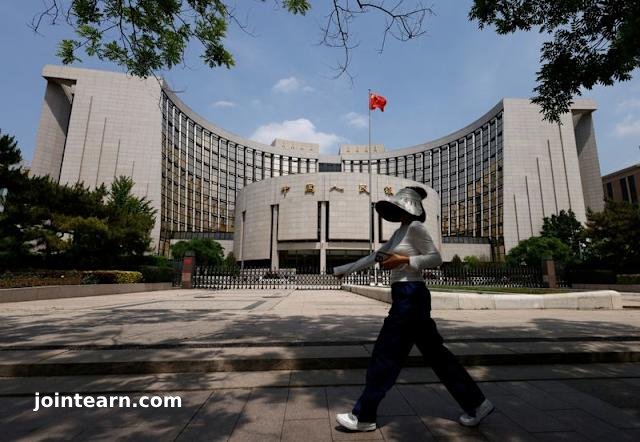China authorities have introduced a series of monetary measures, including interest rate cuts and a significant liquidity injection, to mitigate the economic fallout from the ongoing US-China trade war. This move comes just before high-level trade talks between US and Chinese officials, signaling China’s efforts to stabilize its economy while navigating escalating trade tensions.
Key Stimulus Measures Announced
In a bid to alleviate the strain on its economy, China’s central bank, the People’s Bank of China (PBOC), will reduce its benchmark seven-day reverse repurchase agreement rate by 10 basis points, bringing it to 1.40% effective May 8. Along with this, the reserve requirement ratio (RRR) for banks will be lowered by 50 basis points, releasing 1 trillion yuan (approximately $138 billion) in liquidity into the financial system.
These measures come as part of a broader strategy to support economic growth amid the impacts of the US tariffs. China’s weakening manufacturing sector, as indicated by recent data showing the sharpest contraction in factory activity in 16 months, has intensified concerns over rising deflationary pressures and job market instability.
Strategic Timing for Trade Talks
The timing of the stimulus is seen as a tactical move ahead of crucial US-China trade negotiations set for this weekend. Treasury Secretary Scott Bessent and chief trade negotiator Jamieson Greer are slated to meet with China’s Vice Premier He Lifeng in Switzerland, marking the first opportunity for both sides to de-escalate trade tensions that have disrupted global markets and supply chains.
Analysts from Citi suggest that these monetary measures could create leverage for China in the upcoming trade talks, as timely domestic support could improve China’s bargaining position. Additionally, China’s stock markets saw a positive reaction, with investors welcoming the liquidity boost and the potential thaw in trade relations.
Sectoral and Financial Support
Alongside the rate cuts, China’s government is also expanding its support to specific sectors. The PBOC announced the creation of low-cost relending facilities aimed at supporting tech-related bonds, as well as investments in elderly care and consumption services. The government is also boosting support for agriculture and small businesses, enhancing existing tools to mitigate the effects of the trade war.
Additionally, China’s financial regulators are taking steps to support the A-share market, including a pilot scheme allowing insurance companies to invest an additional 60 billion yuan ($8.31 billion) in stocks.
Impact on China’s Economic Landscape
The stimulus measures are designed to address the immediate challenges posed by the trade war, including weakening export demand and heightened deflationary pressures. While the monetary easing is expected to provide a modest positive impact, analysts caution that the primary constraint on credit is demand rather than supply. As such, fiscal support may be needed for more significant and lasting effects.
The moves also come at a time when the yuan has shown signs of stabilizing, offering the PBOC some room to implement these adjustments without triggering capital outflows. Despite this, some economists, such as Xu Tianchen from the Economist Intelligence Unit, express caution about the long-term credit impact of these measures, although they are likely to renew investor confidence and support China’s stock market.
Looking Ahead to Trade Negotiations
As the US and China approach their upcoming talks, the focus will be on potential tariff reductions and broader trade policy adjustments. Beijing continues to maintain its firm stance on not yielding to US demands, despite the ongoing economic challenges. However, with both sides seeking an avenue for resolution, these talks represent a pivotal moment for global trade relations.
The Chinese government’s proactive approach with monetary easing illustrates its determination to stabilize the domestic economy and prepare for what may be a prolonged round of trade negotiations with the United States.
Conclusion
China’s latest monetary stimulus measures, timed just ahead of the critical US-China trade talks, highlight Beijing’s efforts to cushion the economic impact of the trade war while positioning itself for upcoming negotiations. While the effects of the stimulus are expected to be modest, they are seen as essential in bolstering confidence and providing China with leverage in future trade discussions.




